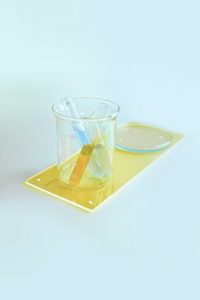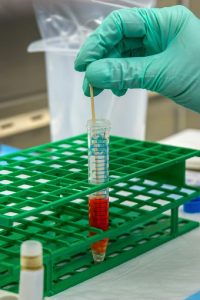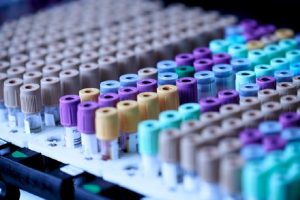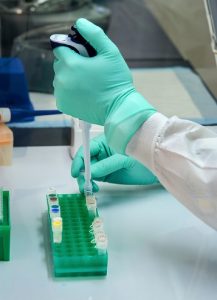ELISA (enzyme-linked immunosorbent assay) is an effective technique for substituting radioimmunoassay (RIA) in immunoassay. Though it’s been around for some time, most scientists and specialists use it without knowing much about it.
They use it to identify autoimmune-related antibodies in invalids with autoimmune disease. An ELISA test helps display reactions between antibodies and antigens in a specific color. It’s no wonder it got its name since it’s linked to ‘enzyme’ and ‘immune.’
Perhaps you’re an expert learning about ELISA tests and Elisa kits for the first time. You’re reading the right post.

More About ELISA
An ELISA is a kind of immunoassay that scientists commonly use to quantify the ranges of a particular target within a specimen. Samples that professionals routinely use in an ELISA include:
- Urine
- Serum
- Cell culture supernates
- Saliva
- Tissue lysates
- Cell lysates
- Plasma
Experts usually run an ELISA in ninety-six well microplates coated with a capture antibody particular for the analyte in question. Immediately after incubation with experimental controls, samples, or standards, this antibody captures the target analyte.
Specialists use a conjugated inspection antibody that ties to a varying epitope on the target analyte to finish the sandwich. They then subsequently include a substrate solution to produce a sign equivalent to the quantity of analyte tied.
What Exactly is an ELISA Test?
An ELISA test is an evaluation that uses chemicals and components of the immune structure (like IgM or IgG antibodies) to detect immune reactions in the body (for instance, to contagious microbes).
The test comprises an antigen or antibody (immunologic fragments) that may create an antigen-antibody response to provide a positive outcome if they react. Or a negative result if they don’t. It also involves an enzyme (a protein that catalyzes a biochemical reaction). Instances of uses of the test include identifying contaminants like:
- Experimental investigations to spot compounds
- HIV
- Allergic diseases like food diseases

Basis of an ELISA Test
Scientists base the assessment on a microtiter plate with a solid phase substrate (target protein, antigen) at a known combination attached to the plate.
When scientists expose the substrate to an antibody with an indicator fixed (enzyme-labeled antibody or dye for color transformation) can produce a color change.
Kinds of ELISA Tests
There are four main kinds of ELISA tests:
Direct ELISA
It’s the simplest and quickest ELISA. A primary antibody marked with a molecule will tie directly to the antigen in question, permitting its quantification or detection.
The simplified process would be:
- Researchers immobilize the antigen on a plate.
- They then include a primary antibody marked with an enzyme that’ll tie to the antigen of interest.
- They add a substrate that, when responding with the enzyme, will offer a clear signal that’ll permit the quantification or spotting of the antigen of interest.
Indirect ELISA
This assay resembles the direct ELISA but in several steps, which amplifies the sign obtained.
Here’s the simplified process:
- Scientists immobilize the antigen on a plate.
- They add an unmarked primary antibody that ties to the antigen in question.
- They include a secondary antibody marked with an enzyme. This antibody will tie to the primary antibody.
- They add the substrate that will offer a clear signal that’ll permit the detection or quantification of the antigen of interest when reacting with the enzyme.

ELISA Sandwich Type
Here, researchers immobilize the antigen between two antibodies, one for detection and the other for capture, also referred to as pairs of antibodies, which will tie to several various epitopes of the similar antigen.
The process is as follows:
- The captured antibody is disabled on the plate.
- The specimen with the antigen of interest that’ll fix itself to the capture antibody is included.
- The identification antibody is added to the antigen linked in turn to the capture antibody.
- You can proceed to the last step if the detection antibody is connected to an enzyme.
- The substrate that reacts with the enzyme will offer a clear sign that’ll permit the antigen of interest’s quantification.
Competitive ELISA
It’s the most complex ELISA method variant. Investigators generally use it to spot and quantify antigens available in small quantities.
Its procedure involves:
- Incubating the antibody with a specimen containing antigen you’d like to detect
- Adding the antibody-antigen complex to the micro-wells, which are pre-coated with the antigen. The free antibody can tie to the antigen-coated on the micro-wells. You can remove the antibody in the unbounded and complex antibody with washing.
- Including enzyme-linked secondary antibody, which is particular to the primary antibody. Wash once more
- Adding substrate, which response with the enzyme to display a color transformation
About an ELISA Kit
It’s a commercially-present kit that generally contains:
- All the chemicals you require to perform an ELISA test
- Pre-coated polystyrene plates
- Detection antibodies
However, you can buy unique kits with substances that you choose.
Types of ELISA Kits
There are four main kinds of ELISA kits:
- Cytokine ELISA Kits
- Coated Quantikine ELISA Kits
- Competitive Parameter ELISA Kits
- DuoSet ELISA Development Kits

Conclusion
ELISA is reliable and efficient for all your antigen and antibody research. Its kit has all you need to conduct your investigation successfully. The key is to know how to use it. And learn about all its components beforehand if necessary. Try an ELISA kit today for your next experiment and discover why most scientists worldwide trust it for accurate results.
